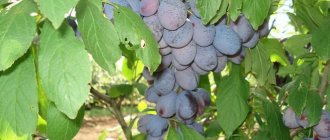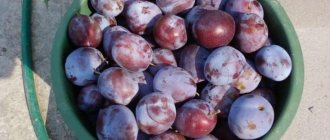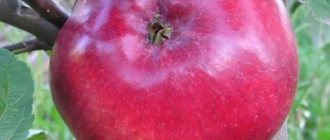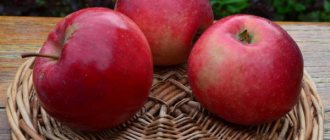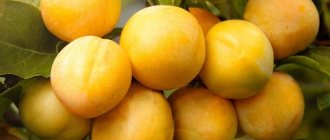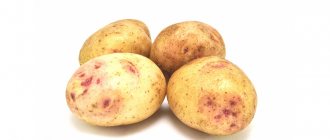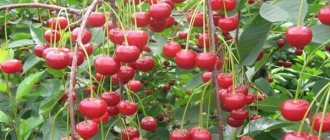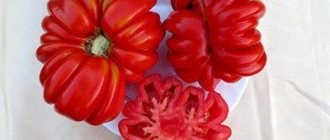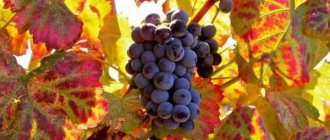Early plum varieties
Early ripening varieties are attractive for commercial use of the crop, since the crop can be sold profitably.
- July.
Plums of this variety are used as dessert and for preparations. The ripening period for red fruits with yellow and sweet flesh is the end of July. Productivity is 12 kg per tree, the first harvest is harvested already in the 3rd year of the tree’s life. The average weight of the egg-shaped fruit is 30 g. The tree has an average height, the foliage is average, the shoots take an arched shape. This variety of plum prefers abundant sunlight throughout the day and moderate soil moisture.
- Zarechnaya early.
The ripening period for large blue fruits of this variety is mid-July. The pulp of the fruit is yellow, has a pleasant sour taste, the plums are covered with a waxy coating. The tree of the Zarechnaya early variety bears fruit regularly, from 3-4 years of life, the average yield is 15 kg per tree. The purpose of the fruit is to use it as a raw material for preparations.
- Precocious.
The variety has increased winter hardiness; fruit ripening period is late July-early August. Small fruits with red skin are transportable and have aromatic, juicy pulp. The yield of the variety is 10 kg per tree; the Skoroplodnaya plum begins to bear fruit in the 4th year of life. The purpose of the fruit is to be used as a dessert.
| July Zarechnaya early Precocious |
Plum Bluebell (Bluebell)
The ripening period is late-ripening, the harvest begins in the third ten days of September.
The tree is vigorous with a rounded, medium-dense crown.
The fruits are large (up to 70-80 g), elongated oval, slightly asymmetrical, dark purple with an intense blue tinge. The skin is dense, the flesh is juicy, tender, sweet and sour, aromatic.
Fruiting occurs 2-3 years after planting, then annually. Flowering later, in May.
The variety is partially self-fertile, high-yielding (up to 65 kg per tree), winter-hardy, resistant to most diseases and pests.
The fruits are perfectly transportable. Recommended for fresh consumption and for processing.
Mid-season varieties
Medium-ripening plums always find their connoisseurs among gardeners, as they have a bright color and rich taste. The aromatic fruits are most often used for preparations and home winemaking.
- Souvenir of the East.
The table variety, obtained as a result of breeding work, is characterized by high yield (up to 40 kg per tree) and large, beautiful fruits with crispy, sweet pulp. The crown of the tree is low, located at a height of no more than 2.5 m. The color of large fruits is dark blue, weight is up to 40 g, the color of the pulp is yellow. The purpose of the harvest is to use it as a dessert, technical processing.
- Romain.
Used in amateur gardens, ripens in the 2nd decade of August. The variety is distinguished by regular fruiting and has reddish foliage. High-quality fruits are medium in size (up to 25 g), have red skin and flesh of the same color. Used for dessert and for processing for the winter.
| Souvenir of the East Romain |
ALTAI JUBILEE plum.
And straight to the advantages: excellent taste, abundant fertility, highest winter hardiness, resistance to kleasterosporiosis. A universal mid-early variety: the fruits ripen by mid-August and weigh 14-16 grams. The suture-groove is clearly pronounced. The color is yellow-orange with a scarlet blush with a waxy coating. The skin is soft and not bitter. The pulp of the fruit is juicy, tasty, and orange in color. The tree is self-fertile and bears fruit for 3-4 years.
Late plum varieties
Most often used for preservation and storage for the winter in the form of dried fruits, they have good frost resistance. Gardeners in the middle zone and northern regions should be selective when choosing late-ripening varieties, since they may lose most of the harvest due to early September frosts.
- The president.
The ripening period is mid-September, the tree of this variety is exceptionally productive; with good care you can get from 40 to 70 kg of large blue fruits with juicy yellow pulp. The purpose of the fruit is universal, suitable for producing prunes, long-term storage and transportation.
- Empress
The tree of this variety is tall, up to 4 m in height, ripening period is 2-3 ten days of September. The plum of this variety begins to bear fruit at 4-5 years of age. It produces about 20 kg of dark purple large fruits with yellow and juicy pulp (up to 50 g). Purpose – processing and procurement.
| The president Empress |
Tula black plum - description and distinctive properties of the variety
The Tula Black variety belongs to the domestic plum species. Appeared a long time ago in the Tula region, through folk selection. Most likely, it was a successful seedling from a seed of an unknown plum variety and took root, spreading from neighbor to neighbor. Breeders know how difficult it is to combine the incompatible - winter hardiness and excellent taste. Therefore, the appearance of this variety is a great success. It was described for the first time in the middle of the last century by agronomist-gardener Serebro G.Ya. It is one of the ten gold varieties of the Central region. It is also called Bryansk late, Meshchevsky prune, Tula prune, Winter blue. In addition to Tula, it is widespread in the Moscow region, Kaluga region and in many areas of the North-Western region of our country.
Despite the name, this variety has nothing to do with Hungarians and it will not produce real prunes. In its composition, this plum is closer to damsons. Although its dried fruits make an excellent compote.
The fruits of the plum variety Tula Black begin to ripen in early September
A low spreading tree produces its first harvest in the 4th or 5th year from the moment of planting. When planted as a grafted seedling, it begins to bear fruit earlier than a plant grown from root shoots. Pollination by another variety is not required for fruit set. But the proximity of a tree of the domestic plum type will at least double the yield.
Tula black tolerates frosts down to -35°C, but can freeze slightly with a sharp change in temperature after a thaw. Recovers quickly. The winter hardiness of flower buds is lower than that of wood. Blooms early, before the leaves open. Flowers may be subject to recurrent cold and frost. In dry summers, without additional watering, plums may crumble.
The fruits are dark blue, with a waxy coating, oval, small. They ripen late, in September. The average weight of one plum is 20–25 g, but, when rationing the ovaries, it is heavier. Sweet and sour, dense, with yellowish-red flesh. Tasting taste score: 4.1 points. The bone is small and easily separated. They can be eaten fresh, but are more often used for preparing preparations for the winter. Suitable for drying. Productivity in favorable years is high, up to 30 kg of fruit per tree. The variety is resistant to rot and other diseases.
The further south the region and the warmer the summer, the sweeter the fruits of the Tula black plum.
Tula black plums that are ripe in appearance must hang on the tree for some time to gain the required amount of sweetness.
Advantages and disadvantages of the variety - table
| Advantages | Flaws |
| Productivity | Dependence of the taste of fruits on the climatic conditions of the growing region |
| Self-fertility | |
| Winter hardiness and ability to quickly recover | |
| Good taste | |
| Universality of consumption | Fruit shedding at low soil moisture |
| Well separated bone | |
| Stable fruiting | |
| Disease resistance |
Yellow plum varieties
Yellow plum varieties resemble cherry plums in color, but these two crops are radically different from each other, both in taste and in appearance.
- Egg.
The tree of this variety adapts well to adverse weather conditions. Large, round fruits of mediocre taste ripen in late August and early September. They cannot be stored for long; they deteriorate within 4-5 days after collection. The beginning of fruiting occurs in the 6th year of the tree’s life. The purpose of the fruit is processing for canning.
- Altai Jubilee.
It takes root equally well in both the south and northern regions. The early ripening variety has small yellow-red fruits with juicy, loose pulp. The beginning of fruiting is the 3rd year of the tree’s life. It is susceptible to chlorosis and pest attacks. This variety of plum is not transportable over long distances.
- Honey white.
The taste of the fruit corresponds to the name; its pulp is juicy and sweet. The tree is tall (up to 5 m), early ripening, round fruits, medium size. The variety is characterized by high yield and winter hardiness.
| Egg Altai Yubileinaya Honey white |
Diseases and pests of plum Tula black
This plum variety is quite resistant to major diseases that affect other varieties. But in unfavorable years, with damp and cool summers, it can be affected by some fungal infections.
The most common diseases - table
| Disease | Symptoms and damage | Protection and prevention measures |
| Gray rot (moniliosis) | The tree gets sick during flowering, the branches look frostbitten or scorched by fire. The disease spreads quickly, causing instant drying of the shoots. The fungus infects the fruit, covering it with a layer of spores and causing rot. |
|
| Clusterosporiasis | Spots appear on the leaves, then holes. At the same time, the fruits are also affected. Gum begins to ooze from the spots, the plums dry out and crumble | |
| Plum pockets | Fruits infected with the fungus become inedible and grow, taking on ugly shapes. | |
| Bacterial burn | The disease spreads during cold, wet summers. In a short time, all parts of the wood darken and dry out, as if fired by fire. Wounds form on the bark, it darkens and peels off |
|
| Gum discharge (gommosis) | A sticky liquid—gum—leaks out from damage to the bark. Various fungal infections and cancer develop on bark impregnated with gum. Extensively affected branches dry out, which can cause the death of the tree. | Clean the damaged area down to healthy wood, rinse with a solution of copper sulfate, dry and cover with garden varnish. You can apply a bandage made from a mixture of fresh mullein and clay. Protect the bark from mechanical damage |
| Sharka | A viral disease of plums that first affects the leaves, on which light chlorotic concentric spots appear, then the fruits. The virus is transmitted by aphids. |
|
Photo: signs of disease
The bark under the gum becomes vulnerable to fungal diseases
Plum pockets turn the crop into inedible, ugly formations
Plum leaves perforated by clasterosporiosis cease to perform their function and weaken the tree
Leaves damaged by coccomycosis turn yellow and fall off
Flowering branches affected by moniliosis look like burnt ones
Moniliosis dries out young shoots and leaves of plum
Fruit rot or moniliosis completely destroys the plum crop in damp, cold summers
Signs of a dangerous viral disease sharka on plum leaves
A tree infected with the sharqi virus cannot be cured.
Fire blight burns trees like flames
Pest varieties - table
| Pest | Damage | Control measures |
| Centipede | Caterpillars of a small insect settle in the seeds of fruits and gnaw out their contents. When populated en masse, the fruits fall off |
|
| Aphid | A small insect, barely visible to the eye, settles in colonies on young shoots and leaves of plum trees. They suck out the sap, weakening the tree. | After flowering, spray the plum once every 7–10 days with a “cocktail” of Fitoverm preparations according to the instructions, with the addition of 1–2 drops of Epin-extra, Cytovit and Zircon |
| Plum sawfly | The female insect lays eggs in buds or flowers; the larvae, as they develop, destroy the ovaries. Can ruin up to 70% of the harvest | |
| Plum moth | A small nocturnal butterfly lays eggs on green plum fruits. The larvae chew holes in the drain and feed on its contents until it shrivels and falls. |
The most dangerous pests - photo gallery
Plum moth butterfly lays eggs on the surface of a plum
A small black fly can destroy the entire plum crop in the garden
The larva of the plum sawfly settles in the plum pit and feeds on its contents.
The female plum sawfly lays eggs in plum buds or flowers.
Fruit beetle larvae feed on plum contents
The larva of the fatty foot feeds on a bone
Slimy sawfly larva feeds on top of leaf
Leaves and shoots occupied by aphids become deformed and stop growing
The black cherry aphid also loves the shoots of plum trees
Plum sawfly larvae can destroy entire crops
Plum pests - video
Chinese plum
This culture is rare in our gardens. Its fruits are attractive and appetizing. The Chinese inhabitant is distinguished by its ecological cleanliness, is more frost-resistant, and bears fruit early. This type of plum is characterized by unusual flowering: the crown is covered with a dense ball of inflorescences, adding spectacularity and uniqueness to the landscape. The flowering period occurs in rainy, cool weather, so flowers that are not able to self-pollinate do not receive the help of insects. To solve this problem, you need to plant cherry plum next to the Chinese plum; it is a reliable pollinator. The fruits of the plant are red or yellow, heart-shaped. The pulp is juicy, with an attached stone and a special taste.
Varieties of Chinese plum: “Red Ball”, “Skoroplodnaya”, “Red Myasaya”, “Golden Ball”, “Yubileinaya”, “Seedling Shiro”. "Golden Ball" has a pineapple flavor.
Plum propagation
Self-rooted plums are propagated by root cuttings and shoots; grafted plums are propagated by green cuttings and graftings.
Beginning gardeners should start with simple methods of propagation - shoots.
We propagate by root suckers
Shoots appear near the trunk. They are usually removed, but can be used for propagation:
- In early spring, away from the trunk (1 m), a shoot is separated, 50 cm high, with a well-developed root system. From the stem of the growth, the root cutting step is 20 cm. The cut site is treated with ash.
- The seating location is chosen in the shade.
- The top is pinched after planting.
- The sign of rooting of the shoot will be the appearance of leaves.
- After 30 days, the seedling is fed with organic matter and mineral fertilizers. Fertilize regularly once every two weeks so that the seedling gets stronger.
Graft
Reproduction by grafting preserves maternal characteristics:
- The rootstock (base) is grown from shoots or seeds. Ideal age 1 year.
- A bud of a varietal tree is used as a scion. The method of grafting with a bud is called budding.
- The rootstock is watered abundantly so that the bark separates well and sap flow increases, and on the day of grafting the trunk is wiped with a damp cloth to remove dust.
- A strip with a bud (3 x 0.5 cm) is inserted onto the trunk of the rootstock. To do this, step 4 cm away from the ground and make an incision in the bark. Carefully bend the bark and insert the shield with the bud. Wrap the budding site with cellophane. The kidney remains open.
- After 20 days, the bandage is removed.
Root cuttings
- They retreat 1-1.5 meters from the trunk and dig up the root system.
- Roots with a thickness of 0.5-1.5 cm are selected and cut into (15 cm) cuttings.
- The beds are prepared, where the roots are planted at an angle, in increments of 10 cm.
- Plantings are covered with agrofibre. The material will protect from sunlight and create a favorable microclimate for cuttings. New shoots will appear in a month.
- The strongest specimens are selected and grown.
- After 2 years, finished seedlings are transplanted to a permanent place.
- Further care is carried out as for young seedlings - fertilizing with organic matter and mineral fertilizers 2 times a week.
- Autumn preparations are sent to boxes with sand and placed in the basement. In spring they are planted in open ground. Storage temperature 0-2 degrees.
How to plant a plum from a seed
Plum trees are propagated from seeds. Varieties suitable for this method: Chinese, Ussuri, Canadian Far Eastern.
Algorithm of actions:
- A ripe fruit is selected. Varieties grown in similar climates are ideal for propagation.
- The bone is freed from pulp and washed under running water. Placed on the windowsill to dry.
- As soon as the nut dries, separate the seed from the shell so that it remains intact.
- A bowl of water will help you check viability. The sunken seed is suitable for germination.
- Planting material undergoes stratification in the refrigerator at a temperature of 4 degrees C.
- The seed is stored in damp sawdust.
- As soon as the seed hatches, the planting material is planted in a pot.
- Care is carried out as for a houseplant.
- In autumn, the seedling is planted in open ground.
- Planting should be done 1.5 months before stable frosts. After wintering, the seedling is transplanted to a permanent place.
How to choose the right plum seedling?
The first step to future high yields is choosing a healthy seedling, prepared according to all the rules for sale and transportation. It is best to purchase young plum trees from nurseries where they are grown by professionals.
The initial examination of a plum seedling is an assessment of the condition of the bark and buds. The bark should not be damaged, and the buds should be slightly swollen and greenish when purchased in spring. Dry, dried out buds are a sign of death or freezing of the tree.
Variety care
Plum trees need care for the trunk circle, watering, fertilizing, shaping and pruning the crown, preventive treatments against diseases and pests, protection from frost, autumn and spring work to prepare for the season.
Behind the trunk circle
The soil under the tree up to the perimeter of the crown should be loose, moist, and free of weeds. In spring and autumn, it is dug shallowly (10–15 cm), removing weeds and larvae of harmful insects. After digging, the ground is covered with a thick layer of organic mulch . This technique is especially relevant for the Tula black plum, which is sensitive to soil moisture and does not tolerate drying out of the top layer of soil. The fact is that the roots of plums are superficial; they cannot independently extract moisture from deeper layers. Mulch prevents water from evaporating, traps harmful insects in the soil, preventing them from coming to the surface, and later, preventing them from leaving for the winter.
You can also plant flowers around the perimeter of the crown - nasturtium, calendula or marigolds. They will not only decorate the garden, but also protect the plum from pests.
A thick layer of organic mulch under the tree protects it from weeds, conserves moisture and, as it decomposes, provides the roots with additional nutrition.
Watering plum trees
During the first half of summer, plums especially need moisture. During the periods of flowering, setting and filling of fruits. At this time, the trees are watered weekly, pouring 2-3 buckets of water under each tree. When the fruits ripen, watering is stopped, as excess moisture can cause the plums to crack and rot. Currently, more and more gardeners are equipping their plots with drip irrigation systems, which completely eliminates the problem of maintaining constant soil moisture.
In the fall, before the onset of cold weather, moisture-recharging irrigation is carried out, which helps plum trees to survive the winter better. In this case, 3-4 buckets of water are poured under each tree.
Fertilizers and fertilizers
When growing plums in your summer cottage, you can do without the use of mineral fertilizers and pollinators. Organic matter, ash and bone meal are quite sufficient, replacing mineral fertilizers and deoxidizers.
Feeding plum trees - table
| Period | Feeding composition (one of the suggested ones) : 1 bucket of solution for each plant |
| Before flowering |
|
| While tying and filling berries | |
| After harvest |
|
Plum care - video
Crown formation and pruning
The main condition for tree health and stable yields is the correct formation and pruning of the crown. All branches should be evenly illuminated by the sun and well ventilated. To do this, the crown is formed into a bowl, removing the central conductor and all the branches growing inside the crown. Strongly growing branches are pinched so that flower buds appear on them. Every year, all branch growth is shortened by 1/3. In the spring, sanitary pruning is carried out: frozen, broken, and dried branches are removed. Crowns growing inward, thickening it.
Formation of a plum crown by year in the shape of a bowl
Autumn work and preparation for winter
In the fall, it is necessary to get rid of the root growth that has grown over the summer. You need to remove it carefully, digging out the root from which the shoot grew, and cutting it off at the very base. After that, cover everything with soil again.
Be sure to whiten the trunks and bases of the skeletal branches of plums in the fall. The composition for whitewashing can be different: lime with the addition of copper sulfate, special acrylic paint for trees, and other compositions. All this can be purchased at any garden store.
It is not recommended to cover young trees up to 4–5 years with whitewash . It is best to wrap their trunks with special tape. You can cut it yourself from sugar bags or thick agrospan. Or you can buy ready-made. Such a wrap will not only protect against frost damage, but also protect young stems from rodents. Additionally, trees are protected from them with spruce branches, which are tied around the lower part of the trunk.
Remove fallen leaves to a compost heap. The soil under the tree is dug up shallowly, mixed with mulch and organic fertilizers. Then the tree trunk circle is again covered with 7–10 cm of organic matter.
A trunk protected with a garden bandage will not crack due to sudden temperature changes in March
Plum care in spring
In early spring, as soon as the snow melts, winter shelters are removed and old mulch is raked from the roots so that they warm up faster and start working. The buds on the plum tree wake up early and, if the roots are still asleep, the tree will begin to use the resources accumulated in the wood, exhaust itself and die.
To prevent diseases and destroy various insects overwintering in the folds of the bark of plum trees, spray the plants with 3% Bordeaux mixture or a concentrated solution of urea (700 g of the drug per 10 liters of water) with the addition of 1 tbsp. copper sulfate.
Treating plum trees with a 7% urea solution delays the blooming of flower buds for 5–7 days, reducing the risk of falling under recurrent spring frosts.
The soil is dug up shallowly, making sure that the roots are not damaged. After complete thawing and warming of the earth, application of fertilizers and watering, the tree trunk circle is again mulched with a thick layer of organic matter.
The plum tree is one of the first to bloom in the garden.
Basic requirements for seedlings
A plum seedling suitable for planting can be annual or biennial. An annual seedling is a thin, even trunk without branches. A two-year-old seedling is a trunk (at least 2.5 cm in diameter) with 3-4 branches - the rudiments of skeletal branches 50-60 cm long. Both take root well in a new place, although two-year-olds begin to bear fruit faster. Three-year-old plum seedlings are more sensitive to transplantation.
When choosing a seedling, special attention should be paid to the health of the roots. The root system should be fibrous, with a central root and many branches and thin roots.
Pruning plums
The plum is formed by pruning. The tree must be healthy. Then pruning and shaping the crown will lead to positive results. When pruning, it is worth considering the characteristics of fruiting.
Pruning a young plum
In the first year, the seedlings should be one meter high, the remaining length is cut off. The standard is formed up to 70 cm in height for an expanded crown, pyramidal - 50.
In the second year, the seedling has 6-7 skeletal branches on the central conductor. 4 skeletal branches of the first order are formed, which are cut in half, the rest are removed. The stem is shortened by one bud from the growth. Below the skeletal branches, new shoots will stretch out on the trunk. They are reduced by 10 cm. They are left so that the standard increases its thickness.
The third year of the seedling. The stem is completely freed from side shoots along the base. Last year's growth is cut by half. Branches of the second order are formed on skeletal branches. Of these, 8-9 external branches are formed.
Further, skeletal branches are not pruned. Shoots growing inside the crown, dry and damaged, are removed. Annual shoots are not pruned if they are less than 70 cm. If they are larger, they are shortened by a third.
Crown formation
Crown formation can be done at any time, but early spring is considered the best period.
Over the course of 4-5 years, a sparsely tiered crown is formed:
In the first year, the crown of the conductor is cut off. The trunk must have no side branches.
Next year, 5-6 branches will grow on the trunk. You only need to leave three branches, the central conductor. They will be the first tier of the crown. The distance from the root collar to the branches is 60 cm. At this step, the trunk should be without shoots. Skeletal branches are shortened to a bud that faces outward. It is desirable that between each branch a height step of 15 cm is maintained and directed in different directions from the conductor.
In the third year, growth will appear on the skeletal branches. We leave one shoot of growth on the skeletal branch. You should choose those that are directed to the outside. The remaining growths are shortened to the bud. The conductor is shortened to a height of one meter.
In the fourth year, it is necessary to continue the formation of skeletal branches - leave one growth, remove the rest. Growths are always trimmed to a bud directed towards the outside.
The second and third tier are formed using the same principle. A spacing of 60 cm is maintained between tiers. Competitors cut branches into a “ring”. That is, without stumps, and the cut areas are treated with garden varnish.
Strengthening fruit branches with supports
High harvests of plums can break branches. To prevent this from happening, props are prepared. They should be located at the center of gravity of the branches. Insulate the contact area with soft material: rags, grass, rubber. First, grooves for skeletal branches are made in the upper part of the support. This will prevent damage to the bark, and there will be no gum (resin) leakage.
Rules for transporting and storing seedlings
Optimal timing for purchasing and planting plum trees in the middle zone:
- End of March - beginning of April;
- End of September - beginning of October.
For the south of Russia, these dates shift by 2-3 weeks forward (spring) or back (autumn).
Seedlings with a closed root system take root best. A reliable seller will definitely cover the roots of the seedling with clay mash before selling it to protect it from drying out and damage during transportation. If the root system is not protected and the seedlings need to be transported, their roots are wrapped in damp cloth, grass, or straw. If the root system is dry, there is a risk of seedling death.
Features of blue plums
Plum is a very tasty fruit. It is usually eaten fresh, but can also be used for making desserts, baking, prunes, and preserving for the winter. In folk medicine, not only plum fruits are used to heal the body or treat diseases, but also the leaves, bark, and flowers of the tree.
Plum is a very tasty fruit
This fruit has many positive qualities. It is useful for anemia, heart disease, metabolic disorders, low hemoglobin, atherosclerosis. It is often prescribed to boost the immune system, remove toxins from the body and improve gastric motility. Regular consumption of plums in small quantities strengthens the nervous system. It is also useful for children and pregnant women, of course, if there are no contraindications.
Plum can hardly be called a harmful product, but in some cases it can still cause harm. For example, it should not be used in case of individual intolerance, bloating, gout, diarrhea, or rheumatism. Sweet varieties are prohibited for diabetes, and sour varieties are prohibited for gastritis with high acidity or ulcers.
There are a lot of varieties of blue plums. Some grow well in the Moscow region, others can produce large yields in the Siberian zone, and, of course, most species can be grown in the southern regions, with a warm climate.
Advantages and disadvantages of the variety
The main decorative difference of the Cysthena plum is its unusual red leaves, which give the crop an elegant appearance.
- It is for them that the plant is valued most of all, but it also has other advantages:
- early flowering;
- maintaining high decorative value after leaves fall;
- compact shape and ease of crown formation;
- versatility of fruit use;
- excellent taste of cream;
- the possibility of growing as a slender tree, after rootstock on a standard of other varieties.
- As for the disadvantages of the variety, this group includes:
- average or even low resistance to diseases and pests;
- the need for winter shelter for shrubs.
Yellow large-fruited plums
Yellow and white large varieties of plums have an attractive appearance. They are often used for winter preparations, making sauces and juice. Depending on the variety, the taste can be sweet or sour, with large or small fruits. Below are yellow and white varieties of plums with large fruits.
Yellow large-fruited plums
- “Honey” is a variety of Ukrainian selection that produces large plums. The tree grows up to 5 meters and needs regular shaping. The foliage is dense and rich green. The fruits are very sweet, with a honey aftertaste. They are almost round in shape, weighing 40-60 g. The peel is bright yellow and dense. The pulp is also yellow, dense, and does not fall apart. The variety is suitable for transportation and tolerates frost and drought well.
When choosing a plum variety, you should pay attention to the size of the fruits that will ripen on it. Large plums make harvesting easier and are pleasant to eat. However, such plums can be demanding to care for, so it is worth carefully studying their features so that the tree brings more benefits than problems in the future.
The best black varieties of large plums
This category includes plums with dark purple skin. From the outside, the fruits really look like black, but due to plaque they can have a blue or red tint.
The best black varieties of large plums
- “Top Hit” is a late variety created by German breeders. The harvest can be harvested closer to October. The fruits are very large, weighing 70-100 g. The peel is almost black, with a purple tint. The coating is not dense, bluish. It is distinguished by tasty pulp, annual fruiting, frost resistance, and transportability. Suitable for home and industrial cultivation.
- "Empress" grows up to 4 meters. The tree bears fruit from 4-5 years of age. The harvest is ready for harvest by the end of September. From one tree 20 kg of juicy fruits are collected per season. They have a dark purple peel and weigh 50 g. The flesh is always yellow and fibrous. Used for winter preparations and desserts.
- "Valor" is a late plum variety. Ripening occurs in the last days of summer. The tree is medium in height with a dome-shaped crown. The cream grows at 50-60 g and looks like a wide oval. The peel is dark purple with a slight coating. The side seam is noticeable. The drupe comes off without any problems. The flesh is greenish and may darken in the open air. The taste is good. There is immunity to sharka and resistance to severe frosts.
Plum BLACK LARGE.
We are convinced that this plum variety deserves special attention and the widest distribution! The fruits are large (up to 43 g), round, rich black in color. The pulp is dark burgundy, very dense, and difficult to crush when fully ripe. The taste is very good, dessert and very unusual (sweet and sour, like dried cherries). The tree is winter-hardy, high-yielding, medium-sized, with a compact crown, medium-late ripening.
The price is for a set of 3 plum seedlings. This planting material is mailed out in the SPRING. On this page of our online store you can order plum seedlings by mail, cash on delivery. Seedlings are sent without prepayment. Payment for ordered seedlings occurs at the Russian Post office upon receipt.
Optimal growing conditions
Bush plum Cystena grows well in open sunny areas, protected from sharp gusts of cold wind. In addition, seedlings can be planted in partial shade, especially if shading occurs at midday. As for the composition of the soil, the more fertile the selected area, the more abundant the harvest you will get, so on depleted soils you should not skimp on fertilizers.
A good option would be loamy soils, with a neutral or slightly alkaline reaction and moderate humidity, but the minimum permissible level of groundwater in any case should be 1.5 m (dwarf plum does not tolerate waterlogging).
Find out how cherry plum differs from plum.
